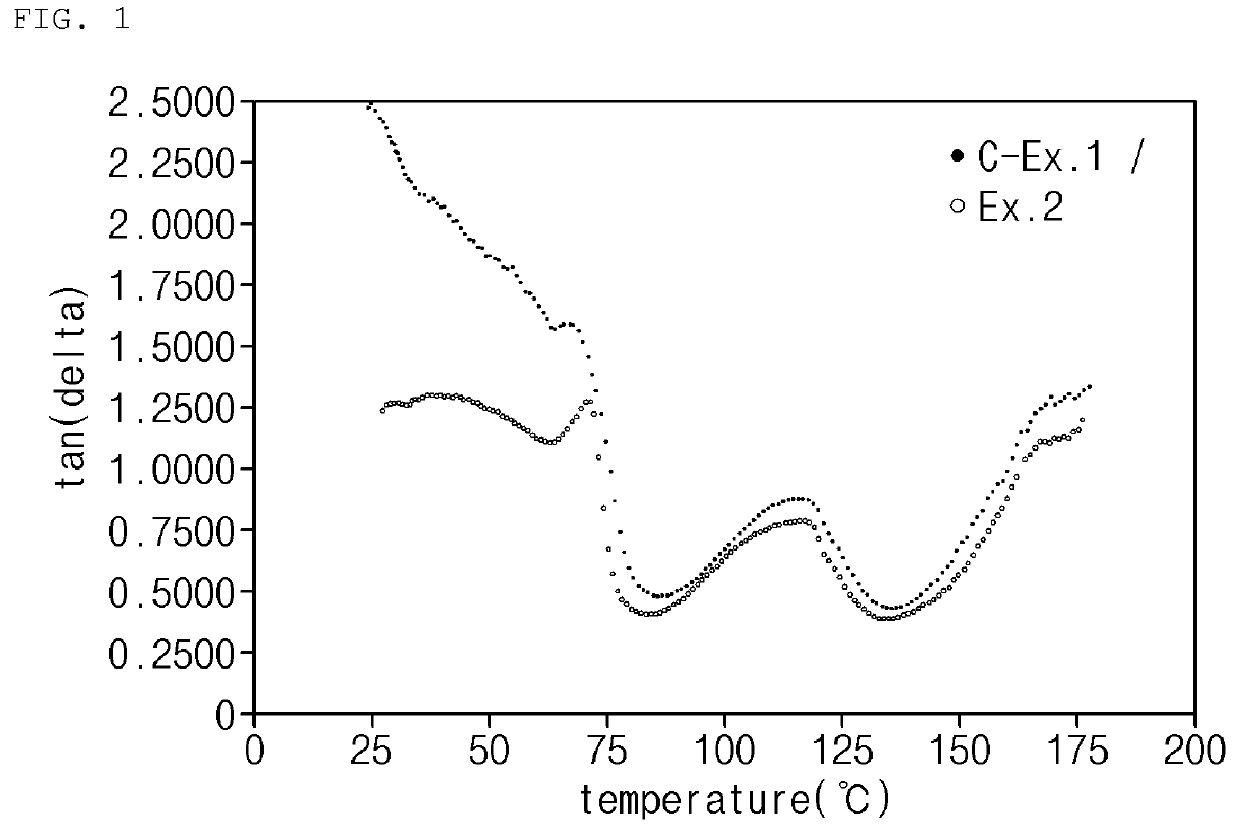Composition for preparing vinyl chloride-based polymer and method for preparing vinyl chloride-based polymer using the same
- Summary
- Abstract
- Description
- Claims
- Application Information
AI Technical Summary
Benefits of technology
Problems solved by technology
Method used
Image
Examples
preparation example 1
First Seed
[0117]To a 500 L, high-pressure reactor, 230 kg of polymerization water, 184 g of sodium lauryl sulfate (SLS) as a first emulsifier, and 110 g of potassium persulfate (KPS) as a water-soluble initiator were injected, and vacuum is applied to the reactor while stirring. To the reactor in a vacuum state, 185 kg of a vinyl chloride monomer was injected, and the temperature of the reactor was increased to 56° C. and polymerization was performed. If polymerization reaction is initiated, 11.1 kg of sodium lauryl sulfate (SLS) was continuously injected for 5 hours to the reactor as a second emulsifier. If the pressure of the reactor reached 4 kg / cm2, the reaction was finished, unreacted vinyl chloride monomer was recovered and removed to prepare a vinyl chloride-based first seed with 0.2 μm.
preparation example 2
Second Seed
[0118]To a 200 L, high pressure reactor, 73 kg of deionized water, 1.21 kg of lauryl peroxide (LPO), and 0.9 g of paraquinone were injected, and a vacuum of −730 mmHg was applied to the reactor. To the reactor in a vacuum state, 66 kg of a vinyl chloride monomer and 7.8 kg of sodium dodecyl benzene sulfonate as an emulsifier were injected, followed by stirring for 15 minutes. The inner temperature of the reactor was decreased to 20° C. or less, and homogenization was performed for 2 hours using a rotor-stator type homogenizer. After completing homogenization, the inner temperature of the reactor was adjusted to 42° C. and polymerization was performed. As a result, the pressure of the reactor reached 3.5 kg / cm2 after 558 minutes, and the reaction was finished. Unreacted vinyl chloride monomer was recovered and removed to obtain a second seed latex with an average particle diameter of 0.6 μm.
example 1
[0119]To a 500 L, high-pressure reactor, 191 kg of polymerization water, 544 g (4.5% concentration) of potassium persulfate (KPS) as a water-soluble initiator, 125 g of lauryl peroxide (LPO) as an oil-soluble initiator, 2000 g (0.66% concentration) of ascorbic acid as a reducing agent, 17.69 kg (39% concentration) of a first seed, and 18.22 kg (38% concentration) of a second seed were injected, and vacuum was applied to the reactor. To the reactor in a vacuum state, 153 kg of a vinyl chloride monomer was injected, the temperature of the reactor was increased to 58° C., and polymerization was performed. If polymerization reaction was initiated, 10.7 (28% concentration) of sodium lauryl sulfate (SLS) was continuously injected to the reactor for 3 hours as an emulsifier. After 276 minutes, if the pressure of the reactor reached 3.5 kg / cm2, the reaction was finished, unreacted vinyl chloride monomer was recovered to prepare a vinyl chloride-based polymer.
PUM
| Property | Measurement | Unit |
|---|---|---|
| Fraction | aaaaa | aaaaa |
| Fraction | aaaaa | aaaaa |
| Percent by mass | aaaaa | aaaaa |
Abstract
Description
Claims
Application Information
 Login to View More
Login to View More - R&D
- Intellectual Property
- Life Sciences
- Materials
- Tech Scout
- Unparalleled Data Quality
- Higher Quality Content
- 60% Fewer Hallucinations
Browse by: Latest US Patents, China's latest patents, Technical Efficacy Thesaurus, Application Domain, Technology Topic, Popular Technical Reports.
© 2025 PatSnap. All rights reserved.Legal|Privacy policy|Modern Slavery Act Transparency Statement|Sitemap|About US| Contact US: help@patsnap.com



